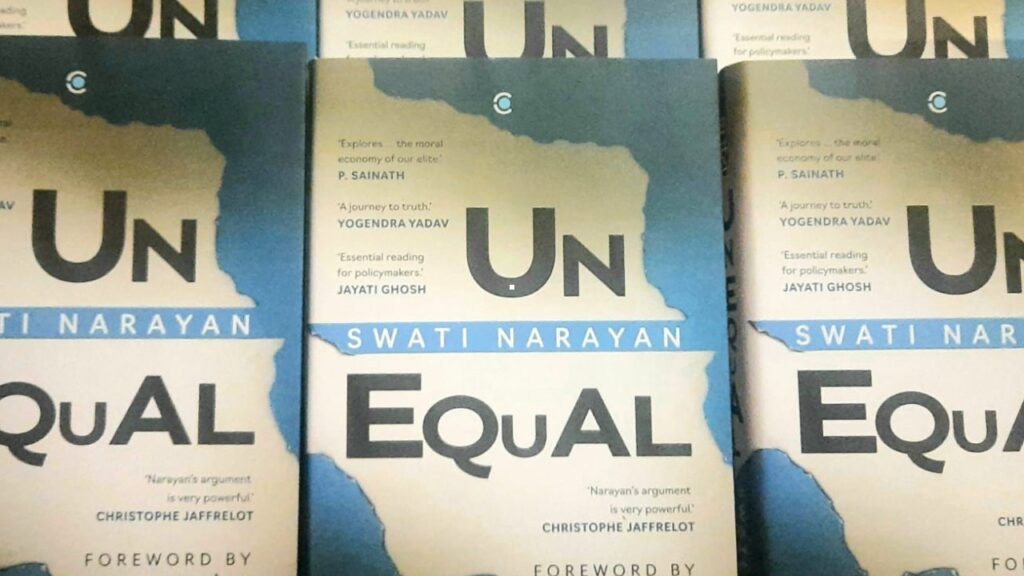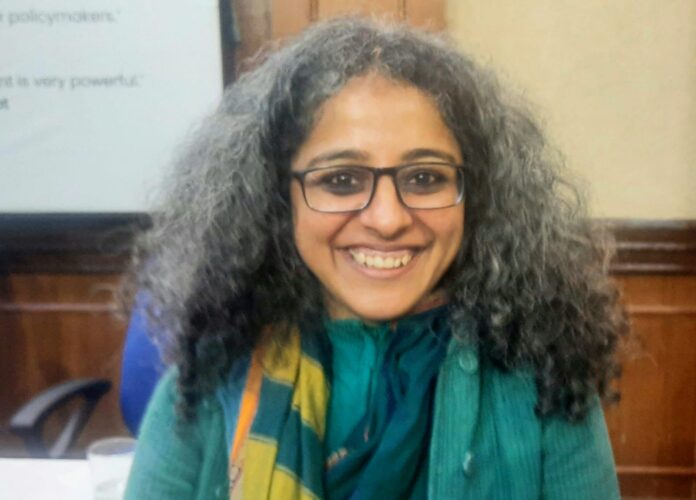Dr. Swati Narayan, an accomplished academic and dedicated activist, holds the position of Associate Professor at the School of Public Health and Human Development at O.P. Jindal Global University. Before this, she contributed as a Visiting Faculty at the esteemed National Law School of India University.
With a commitment spanning over a decade, Dr. Narayan has actively engaged in groundbreaking social movements and collaborated with various civil society organizations. Her multifaceted educational background includes alma maters such as the Tata Institute of Social Sciences, the School of Oriental and African Studies, and the London School of Economics and Political Science.
Dr. Narayan’s insightful research and opinion articles find a home in reputable publications like The Indian Express, The Hindu, The Telegraph, Hindustan Times, Prospect Magazine, Economic and Political Weekly, Gender and Development, The Guardian, and various other journals.
In an insightful conversation with The Interview World, Dr. Swati Narayan sheds light on her recent publication, titled “Unequal: Why India Lags Behind Its Neighbours,” which delves into the factors influencing India’s lower performance in developmental indices. Here, we present the key highlights from her interview.
Q: What are the major five indicators that compelled you to conclude that India is lacking with its neighbours?
A: In my analysis, I focus on two key aspects: secondary data and primary data. When considering secondary data, one can utilize various established indicators like the Human Development Index, Multi-dimensional Poverty Index, and Hunger Index. Turning to my primary survey, I specifically examined education, healthcare, nutrition, and sanitation. The findings unmistakably reveal that the 40 villages surveyed in Bihar lag behind those in Bangladesh and Nepal.
Q: How do you conclude that the entire India is lacking on those indexes while considering data only from Bihar?
A: No, I don’t draw that conclusion; instead, I emphasize that Northern India, with Bihar serving as a representative example, is facing developmental challenges. However, upon closer examination of my primary survey data, it becomes evident that Southern India presents a distinct scenario.
Examining the overall average indicators provided by international agencies such as the World Hunger Index and Human Development Index, it is noteworthy that the average ranking of India is lower than that of Bangladesh and Nepal. This prompts the need for a thorough investigation, as our overall performance seems subpar.
The primary cause behind India’s lagging development is attributed to its slow and uneven social progress. A multitude of severe inequalities exists, compounding and magnifying each other. As discussed in my book, the disparities in life chances between the rich and poor, men and women, families and homes are so pronounced that unless these inequalities are addressed, the nation as a whole cannot thrive, let alone aspire to be a global leader.
Q: How do you see Bangladesh ahead of India in terms of women’s employment or participation?
A: In Bangladesh, almost half of the female population actively engages in work outside their homes, contributing to their families’ financial well-being. Conversely, in India, over the past two decades, there has been a notable decline in the number of women participating in the workforce. This prolonged trend, spanning more than ten years, signifies a concerning reduction in the labor force involvement of women. Such a shift in the employment landscape raises significant apprehensions about the socio-economic implications for women in India.
Q: What kind of inference you have drawn in all these three countries on gender equality?
A: Gender equality serves as the foundation for societal progress, with education standing as its core element. In both Nepal and Bangladesh, the pivotal role of education is evident. Surprisingly, in Bangladesh, I observed a noteworthy trend where women, in many instances, outpaced their husbands in educational attainment.
Contrary to preconceived notions, Bangladesh, as a nation, challenges stereotypes. During the aftermath of the guerrilla war in Nepal, a significant transformation occurred. Women, once confined to their homes, began to venture into the workforce. Currently, an impressive 80% of women actively contribute to the workforce in Nepal.
These observations underscore the possibility of transformative change. The nexus between gender equality and education suggests that a paradigm shift is not only conceivable but also imperative.
Q: What steps should India take to improve on this?
A: Promoting education and employment opportunities for women is crucial. Additionally, addressing health and malnutrition issues is equally important. Health, in particular, is a matter of greater concern for women compared to men, as they tend to experience illnesses more frequently. Consequently, there is a pressing need for increased healthcare provisions. Prioritizing women’s issues is essential, rather than merely viewing them as beneficiaries or as a means to secure votes. Notably, Bangladesh has had female prime ministers for the past three decades, and this has had a significant positive impact.




Your knowledge and expertise on various topics never ceases to amaze me I always learn something new with each post